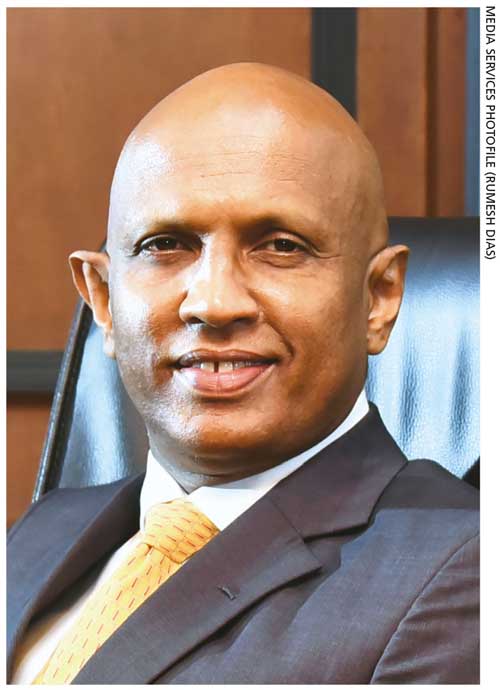Compiled by Yamini Sequeira
SPOTLIGHT ON RENEWABLES
Wijith Pushpawela weighs in on adopting new renewable energy technologies

Q: What’s your assessment of the power and energy sector, in light of the power crisis in 2022 and recovery thereafter? Additionally, what is your take on the impact of the country’s energy policy on the sector over the years?
A: The power sector of any country is its nerve centre and an integral part of the economy. Therefore, the availability of an uninterrupted quality power supply generated through sustainable sources is extremely important in ensuring energy security.
More than 45 percent of Sri Lanka’s energy needs is generated by thermal power plants, which means we are dependent on fuel imports and volatile global oil prices. Another 40 percent is generated by hydropower, which is dependent on favourable weather conditions.
The nation had to face a major power crisis due to the shortage of foreign currency needed to import the fuel required for thermal power plants, coupled with adverse weather conditions that affected hydropower generation at the same time.
Despite being an island with ample solar and wind potential, a sustainable policy for renewable energy hasn’t been implemented, leading to extended power cuts.
Unfortunately, the power and energy policy is revised with every change of government – and this lack of consistency has been unhealthy for the sector. The absence of a consistent power generation mix has also had adverse effects.
The government’s long-term recovery plan is to reduce the reliance on hydro and thermal energy by driving the renewable energy sector – with a vision to generate 70 percent of the nation’s energy requirement from renewable resources by 2030.
This is an ambitious target, and the utility authority has embarked on this journey swiftly and aggressively, encouraging independent power producers to invest in renewable power plants. Many large-scale power producers from various parts of the world have evinced interest in investing in such projects in the recent past.
Q: If you were to restructure the sector in terms of energy sources, and public and private power producers, how would you formulate the ideal mix for Sri Lanka?
A: Sri Lanka can be a power hub in this part of the world with its huge wind power potential, both onshore and offshore. The World Bank estimates that the country has a wind power potential of 56 GW, which would enable it to export as well.
It’s also important to connect the grid to the power grids of neighbouring countries, not only for exporting and importing cheap power when required but to maintain the stability of the grid – especially when large-scale renewable energy power plants are connected.
While restructuring the mix, we must also consider newer technologies to maintain grid stability and ensure uninterrupted quality power with newer sources such as hydrogen.
The current tariff bidding process is transparent and will benefit consumers with the lowest tariffs. Both local and foreign companies are displaying a strong interest in the renewable energy sector. And there are many private sector investors who can develop the sector with existing opportunities.
Q: In your opinion, were the recent electricity tariff hikes necessary – and would you say they’re sustainable for households and industry?
A: Subsidies are not sustainable in the long term and therefore, the removal of electricity subsidies was the right move by the government. When electricity is subsidised, the actual cost of production of any product cannot be traced. It has also made users more conscious of their electricity consumption.
We need to look at ways to reduce the real price of electricity by cutting production costs to reduce electricity bills. This can be achieved by accelerating renewable energy.
However, the impact of electricity tariff hikes on industry may need to be reviewed to retain and attract investors, provided that businesses generate foreign currency that offsets any subsidies offered to them.
Q: What are the affordable technologies that can help the energy sector in the future?
A: As a country, we have tapped our hydropower potential to the maximum; and as such, we must look to emerging technologies – one of which is pump storage systems.
At off-peak times, these systems utilise power generated through solar power during the day to pump water back into reservoirs. They are used in many parts of the world.
Hydrogen technology is the future and the government is exploring the relevant modalities. Adequate storage of hydrogen would enable us to run our transport systems and supply hydrogen powered ships.
Furthermore, given Sri Lanka’s wind power potential, offshore wind plants would be ideal for generating hydrogen.
Q: And finally, how do you view Sri Lanka’s progress in adopting green energy?
A: The government’s goal to achieve 70 percent of the country’s energy needs through renewable sources by 2030 is commendable. It’s extremely important to ensure that the grid is ready to accommodate the additions of renewable energy.
Apart from this, investors must be facilitated in a timely manner by improving the ease of doing business by way of streamlining approvals and licensing processes.





